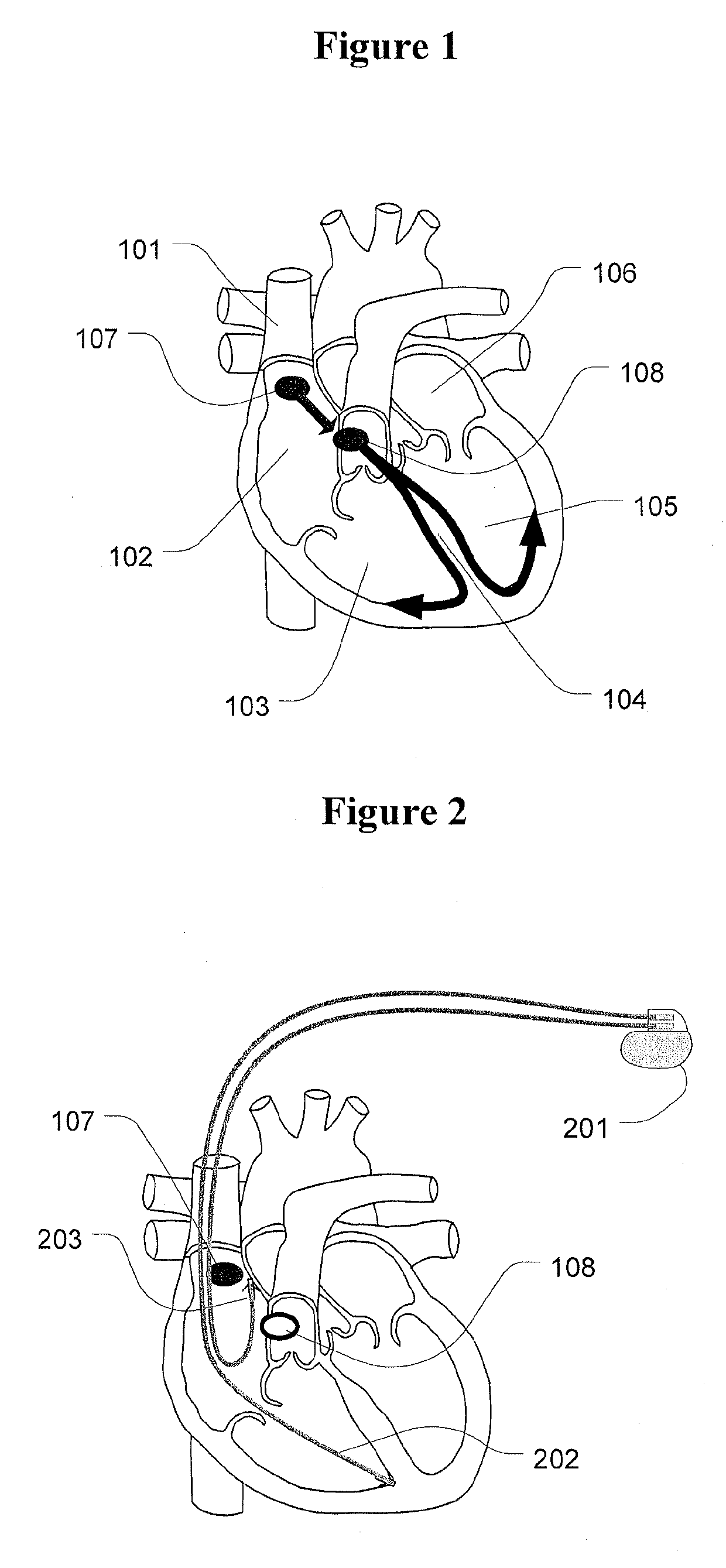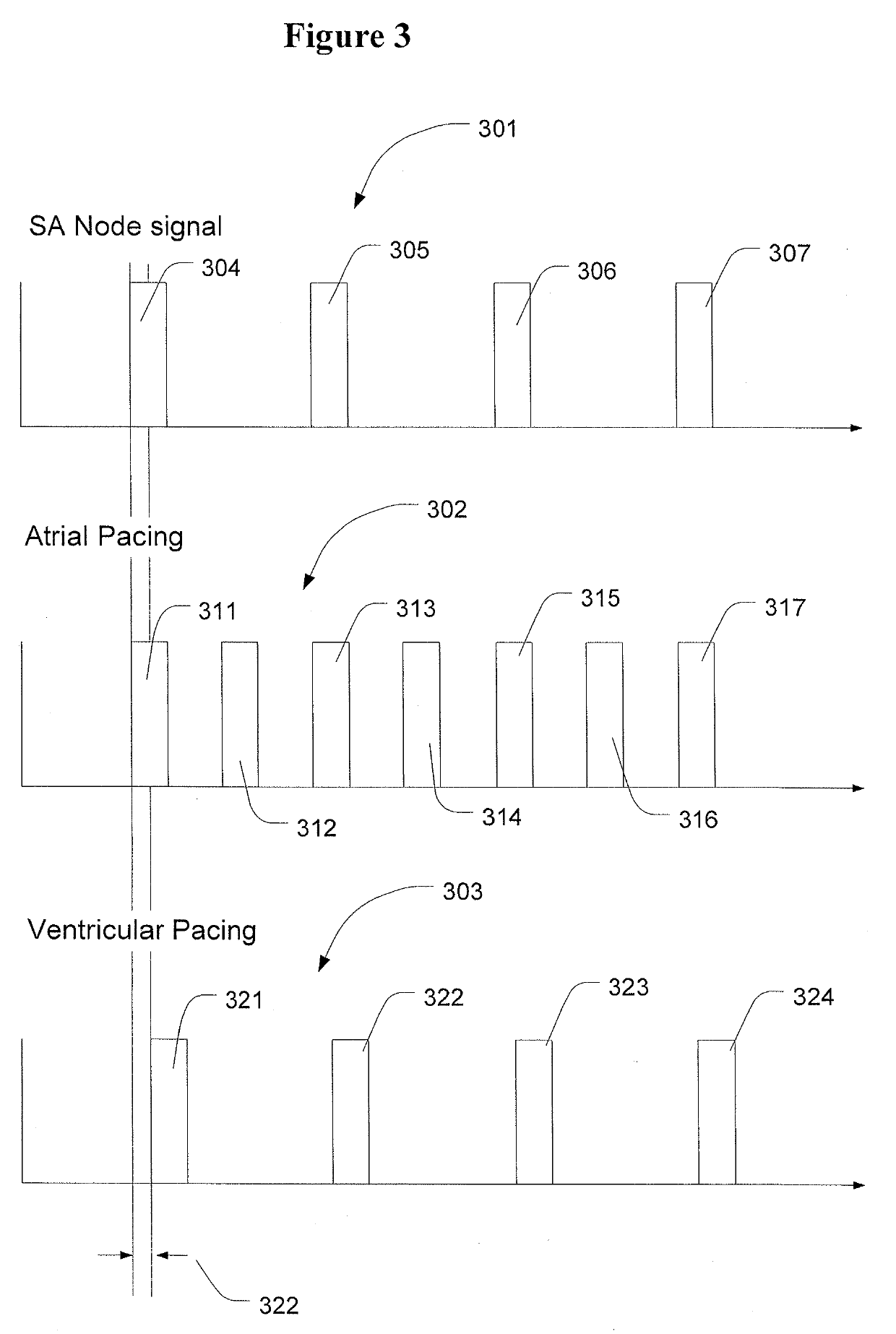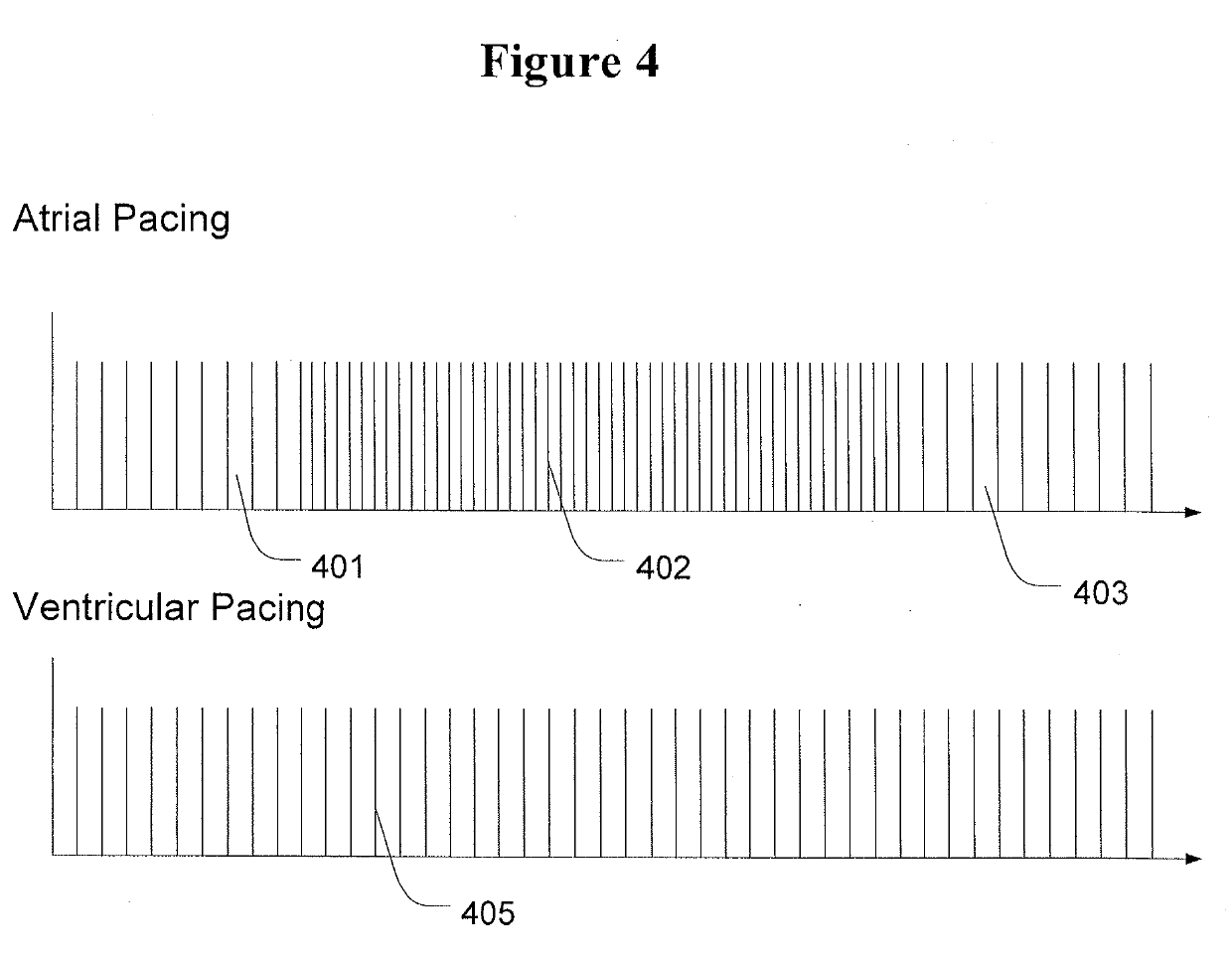Methods and Apparatus to Stimulate the Heart
a heart and apparatus technology, applied in the field of methods and apparatus to stimulate the heart, can solve the problems of lowering blood pressure and suboptimal heart performance, and achieve the effect of maximizing the effect of atrial contraction and maximum vasodilatation
- Summary
- Abstract
- Description
- Claims
- Application Information
AI Technical Summary
Benefits of technology
Problems solved by technology
Method used
Image
Examples
Embodiment Construction
[0082]FIG. 1 shows a normal heart. Electrical pulses in the heart are controlled by special groups of cells called nodes. The rhythm of the heart is normally determined by a pacemaker site called the sinoatrial (SA) node 107 located in the posterior wall of the right atrium 102 near the superior vena cava (SVC) 101. The SA node consists of specialized cells that undergo spontaneous generation of action potentials at a rate of 100-110 action potentials (“beats”) per minute. This intrinsic rhythm is strongly influenced by autonomic nerves, with the vagus nerve being dominant over sympathetic influences at rest. This “vagal tone” brings the resting heart rate down to 60-80 beats / minute in a healthy person. Sinus rates below this range are termed sinus bradycardia and sinus rates above this range are termed sinus tachycardia.
[0083]The sinus rhythm normally controls both atrial and ventricular rhythm. Action potentials generated by the SA 107 node spread throughout the atria, depolarizin...
PUM
 Login to View More
Login to View More Abstract
Description
Claims
Application Information
 Login to View More
Login to View More - R&D
- Intellectual Property
- Life Sciences
- Materials
- Tech Scout
- Unparalleled Data Quality
- Higher Quality Content
- 60% Fewer Hallucinations
Browse by: Latest US Patents, China's latest patents, Technical Efficacy Thesaurus, Application Domain, Technology Topic, Popular Technical Reports.
© 2025 PatSnap. All rights reserved.Legal|Privacy policy|Modern Slavery Act Transparency Statement|Sitemap|About US| Contact US: help@patsnap.com



